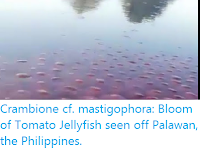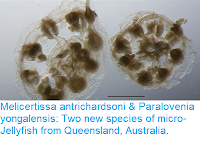Residents of Hilton Head Island in South Carolina have reported seeing large numbers of Cannonball Jellyfish, Stomolophus meleagris, stranding on beaches on the northern part of the island this week. The Jellyfish started to appear on Friday 10 April 2020, with thousands being seen in some areas. Whilst such large-scale strandings are potentially alarming, they are quite common in the area at this time of year, as packages of warm, nutrient-poor, water from the Gulf Stream begin to come closer to the shore, encountering the cooler, nutrient-rich water of the inshore environment, causing the Jellyfish to undergo population explosions called blooms. Large numbers of Jellyfish in the water can very quickly turn into large numbers of Jellyfish on a beach, as these animals are poor swimmers, and tend to drift where currents and sea breezes take them, with the effect that if conditions change and drive them onshore, they have no way to escape.
Cannonball Jellyfish, Stomolophus meleagris, stranded on a beach on Hilton Head Island, South Carolina, on Friday 10 April 2020. Mandy Matney/FitsNews.
Cannonball Jellyfish are common in the Gulf of Mexico and western Atlantic from the southeaster coast of the US south to Brazil, as well as on both the east and west coasts of the Pacific, from California south to Ecuador, and in the South China Sea and Sea of Japan. The Atlantic population is generally brown in colour, while the Pacific population is bluish, but they are considered to be the same species. These Jellyfish reach about 25 cm in diameter, with a distinctive 'cannonball' shaped bell, and a cluster of short oral arms around the mouth. They excrete toxin from the nematocysts (stinging cells) into the water, stunning small prey items and discouraging predators, but are not harmful to Humans, and are widely eaten in parts of Asia, with Jellyfish being exported from the US to Japan, China, and Thailand for consumption.
See also...
Follow Sciency Thoughts on Facebook.







